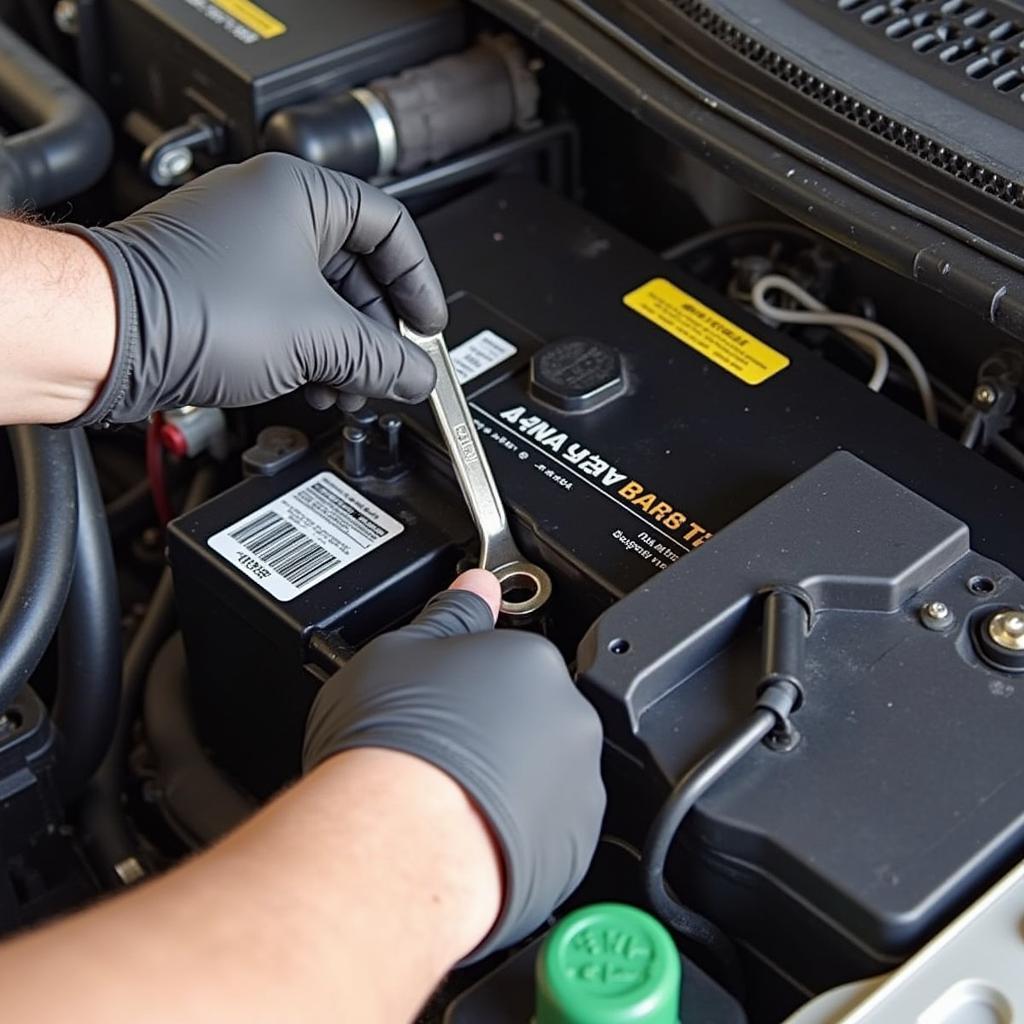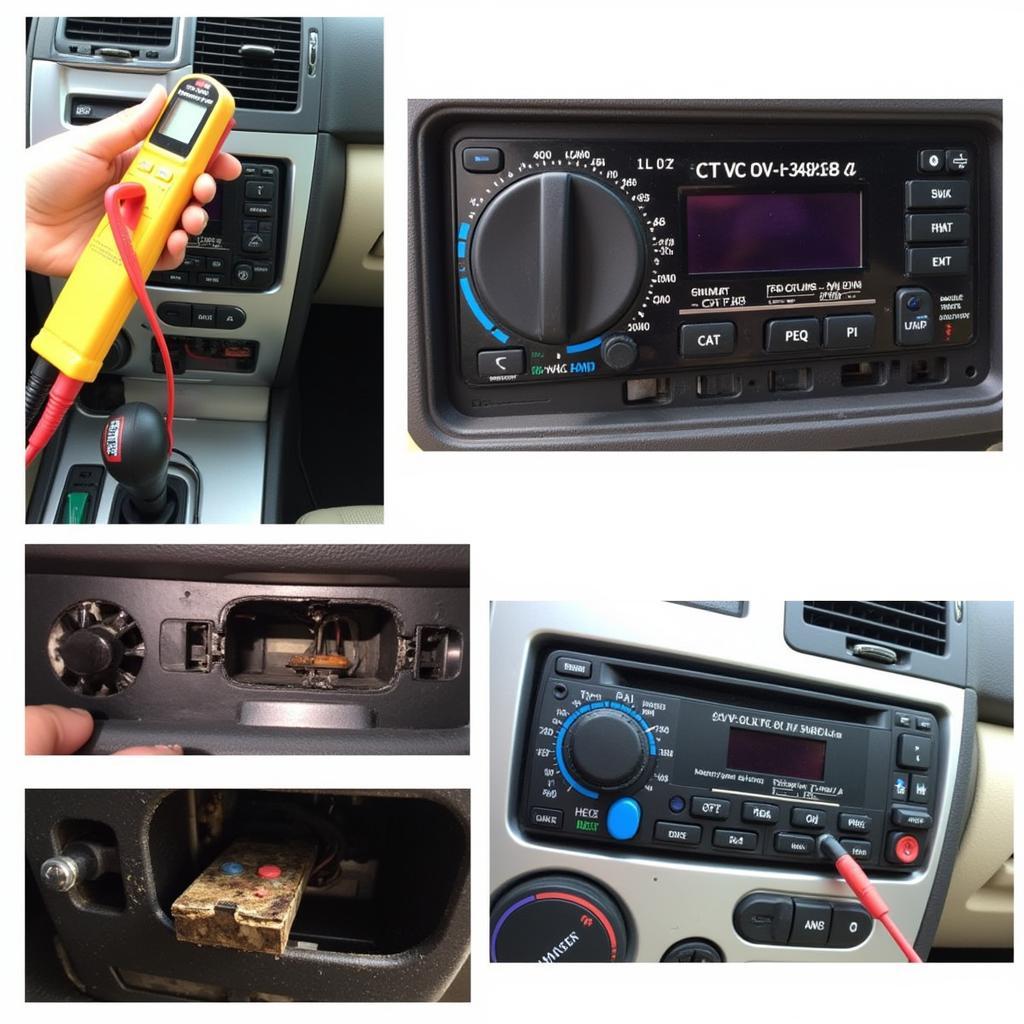The AdBlue warning light on your Opel Grandland X can be a stressful experience. This light signals a potential issue with the AdBlue system, which is essential for reducing harmful emissions from your diesel engine. Fortunately, understanding the common causes and solutions can help you address the problem quickly and efficiently.
Understanding the AdBlue Warning Light
The AdBlue warning light is a crucial indicator of potential issues within your vehicle’s emissions system. When it illuminates, it typically means that there’s a problem with the AdBlue fluid level, quality, or system functionality. Contact Here for Free Video Tutorial.
Common Causes of the AdBlue Warning Light
Here are some of the most frequent reasons why the AdBlue warning light might appear on your Grandland X:
- Low AdBlue Fluid Level: This is the most common cause. If the AdBlue tank is running low, the warning light will illuminate, prompting you to refill the tank.
- AdBlue Quality Issues: AdBlue is a highly specific fluid, and using the wrong type or contaminated AdBlue can trigger the warning light.
- Faulty AdBlue Sensor: The sensor responsible for measuring the AdBlue level may malfunction, leading to an inaccurate reading and the warning light appearing.
- AdBlue System Problems: Occasionally, the AdBlue pump, injector, or other components within the system can fail, leading to the warning light.
Resolving the AdBlue Warning Light
Here’s how to troubleshoot the AdBlue warning light on your Grandland X:
- Check AdBlue Fluid Level: The first step is to check the AdBlue fluid level in your vehicle’s tank. If the level is low, simply refill it with high-quality AdBlue.
- Inspect AdBlue Tank: Examine the AdBlue tank for any signs of leaks, cracks, or damage. A leaking tank can cause a loss of AdBlue and trigger the warning light.
- Verify AdBlue Quality: Ensure you’re using genuine AdBlue and not a substitute or contaminated fluid. Improper AdBlue can cause problems with your emissions system.
- Diagnose Faulty Sensors: A malfunctioning AdBlue sensor can lead to an inaccurate reading. Consider getting the sensor checked by a qualified mechanic.
- Address AdBlue System Problems: If the AdBlue warning light persists even after checking the fluid level and sensor, there may be a problem with the AdBlue system itself. A professional mechanic can diagnose and repair any issues.
Expert Tip from John Smith, Certified Automotive Technician:
“Always use genuine AdBlue from a reputable source. Using the wrong type or contaminated AdBlue can cause serious damage to your vehicle’s emissions system and lead to expensive repairs.”
Frequently Asked Questions about the Grandland X AdBlue Warning Light
Q: What happens if I ignore the AdBlue warning light?
A: Ignoring the AdBlue warning light can lead to serious problems, including reduced engine performance, decreased fuel efficiency, and even engine failure.
Q: How often do I need to refill the AdBlue tank?
A: The frequency of AdBlue refills depends on your driving habits and the size of your tank. Consult your owner’s manual for recommended refill intervals.
Q: Can I drive my Grandland X with the AdBlue warning light on?
A: It’s not recommended to drive your Grandland X with the AdBlue warning light on for an extended period. The warning light indicates a potential problem that should be addressed as soon as possible.
Q: How much does it cost to repair an AdBlue system problem?
A: The cost of repairing an AdBlue system problem can vary depending on the specific issue and the complexity of the repair.
Q: Can I refill the AdBlue tank myself?
A: Yes, you can typically refill the AdBlue tank yourself. However, ensure you use high-quality AdBlue and follow the manufacturer’s instructions for safe and proper filling.
Conclusion
The AdBlue warning light on your Grandland X shouldn’t be ignored. Understanding the common causes and solutions can help you quickly resolve the issue and ensure your vehicle’s emissions system functions correctly. If you’re unsure about addressing the problem, consult a qualified mechanic to avoid potential damage and costly repairs.



